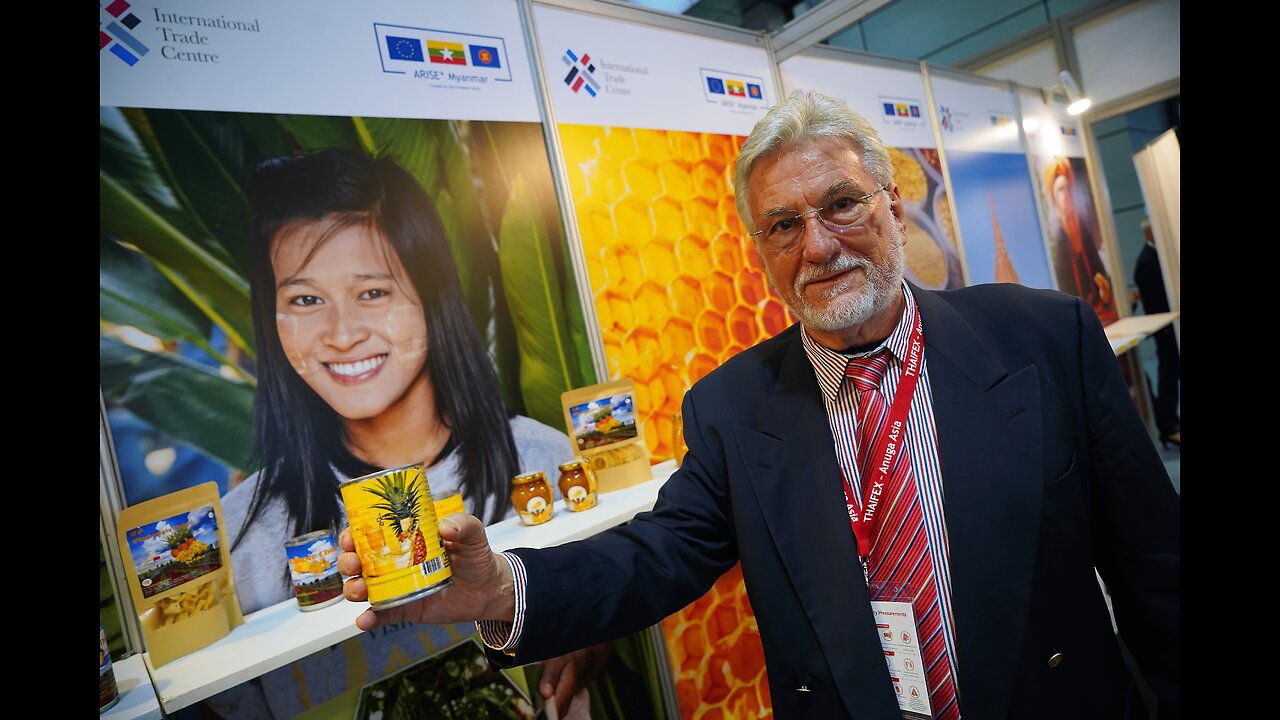Premium Only Content

THE ROAD TO SUCCESSFUL TRADE SHOWS: "Let the Customer Find You!"
https://www.amazon.com/ROAD-SUCCESSFUL-TRADE-SHOWS-Customer-ebook/dp/B0CQWFVTY1/ref=tmm_kin_swatch_0?
“THE ROAD TO SUCCESSFUL TRADE SHOWS” describes the fundamentals of managing trade show participation and dives deeper into the thought processes underlying the five phases. That is to encourage you, the reader, to develop and add your own ideas for enhancing your trade show performance and optimising outcomes. While the guide is primarily tailored for exporters of agri-food commodities from emerging markets, its content is applicable to any product sector and industry internationally.
Trade shows are an integral part of expanding global business, offering a cost-efficient way to promote trade and develop exports if prepared for and executed well. They provide excellent platforms for businesses to showcase their products, interact with potential clients, and gather market intelligence, representing a valuable investment opportunity for those aiming to expand their market reach and foster sustainable growth.
Successful participation in a trade show requires careful planning, thorough preparation, and sustained post-event activities. The latter are decisive to leverage contacts, finalise deals, and bank and build on information gathered and lessons learned. This guide proposes a timeline that covers a year before the trade show and extends six months past the event, which is structured in a sequence of five “P” phases of trade show event management: Prerequisites, Planning, Preparation, Participation, and Post-event follow-up.
In the Prerequisites Phase, aspiring exporters need to conduct a self-audit of their company’s international business and export readiness as a precondition to entering the planning and preparation phases for a trade show in earnest.
The Planning Phase begins as early as one year before a trade show with an assessment of the company’s export capacities and compliance with quality assurance and certification requirements for accessing international markets. That chapter provides guidance for choosing the right event, selecting the mode of participation, and for getting ready to prepare for a selected show.
The Preparation Phase is divided into three stages starting six, four, and one month before the trade show, respectively.
The first stage comprises allocating responsibilities within the company, setting show objectives, and formulating outcome goals supported by a budget. This leads to developing a show-marketing strategy that optimises visibility and focuses on desired outcomes.
The second stage is driven by practical aspects such as (a) registering with the trade show organiser, (b) selecting the stand type and location, and (c) getting it built. It also covers (d) reviewing and updating company documents, (e) preparing promotional materials, and (f) broadcasting the event.
The final month includes a “roll call” to audit preparedness and allows for last minute corrections.
The Participation Phase chapter provides advice on (a) stand preparation, management, and maintenance, (b) proactively engaging with visitors, and (c) exploring opportunities for networking and gathering market intelligence beyond the stand.
The Post-Event Follow-Up Phase focuses on pursuing ultimate business goals. The guide emphasises the relevance of the follow-up processes, evaluations, and lessons learned for continuously contributing to business development. A feedback loop from the follow-up results and lessons learned is key to establishing a quality cycle for repeat trade show participation and sustained business growth.
-
 LIVE
LIVE
LFA TV
11 hours agoLFA TV ALL DAY STREAM - FRIDAY 8/1/25
3,855 watching -
 LIVE
LIVE
The Bubba Army
21 hours agoHulk Hogan had Leukemia? - Bubba the Love Sponge® Show | 8/01/25
5,208 watching -
 18:36
18:36
DeVory Darkins
7 hours ago $1.56 earnedTrump scores MAJOR WIN with Americas youth as Biden drops HORRIBLE speech
2.49K15 -
 14:13
14:13
Clickbait Wasteland
13 hours ago $2.22 earnedAsking New Yorkers Who they Support for Mayor: Harlem
17K22 -
 19:55
19:55
The Rad Factory
14 hours ago $0.48 earnedCan I Fix My Fire Damaged F1 Car?
3.71K1 -
 1:26:22
1:26:22
Dialogue works
2 days ago $0.20 earnedScott Ritter: Russia Just DEFIED the U.S.: We'll End the War on OUR Terms!
6656 -
 LIVE
LIVE
BEK TV
22 hours agoTrent Loos in the Morning - 8/01/2025
359 watching -
 13:08
13:08
Dad Saves America
12 hours ago $0.86 earnedTeachers Unions Play Politics While Students Lag Behind - Poisoning of the American Mind: Pt 4
11.4K9 -
 20:05
20:05
Preston Stewart
12 hours ago $1.59 earnedCrimea Raid to Chasiv Yar Fight
10.9K8 -
 8:11
8:11
Millionaire Mentor
15 hours agoTulsi Gabbard and Leavitt DOUBLE-TEAM Kaitlan Collins in FIERY Exchange
8.87K5